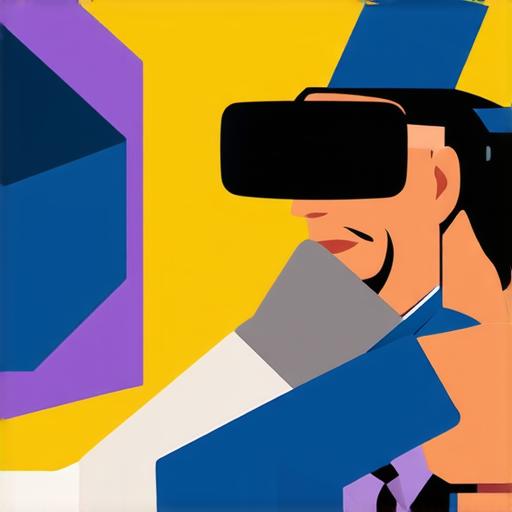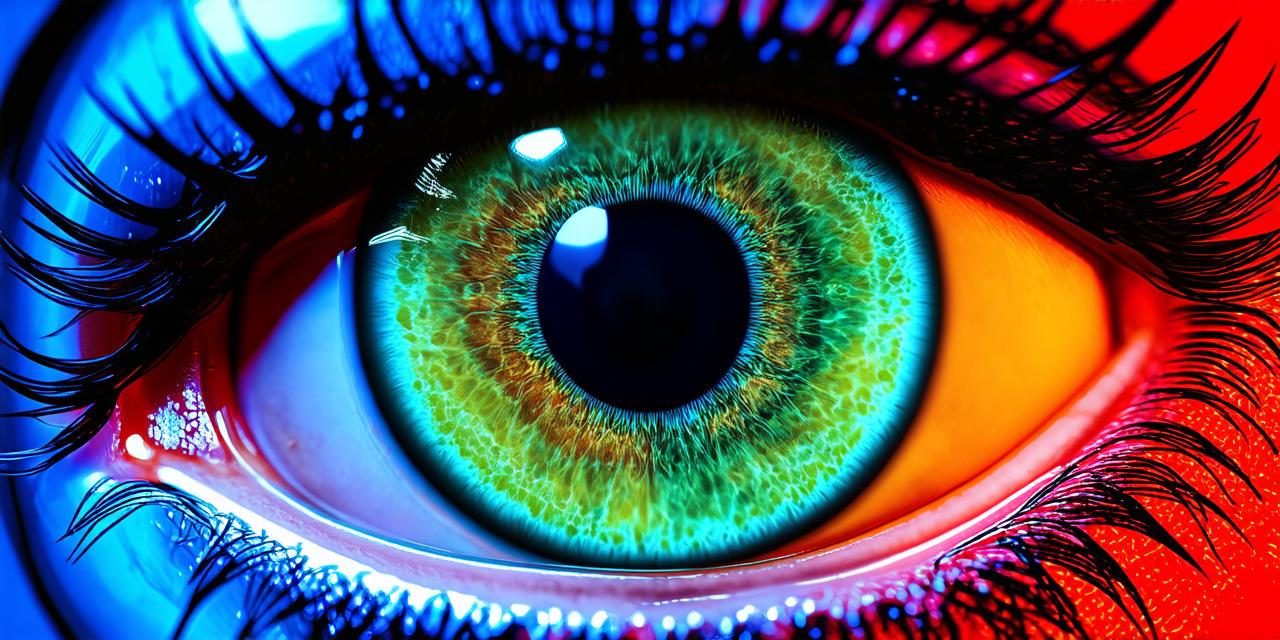
Introduction:
Virtual reality (VR) is a rapidly growing technology that has gained popularity in various industries such as gaming, education, healthcare, and entertainment. The immersive experiences provided by VR can be both engaging and beneficial, but there are concerns about the potential impact on eye health. In this article, we will explore the effects of VR on eye health and provide recommendations for developers to ensure that their users experience minimal negative effects.
The Science Behind Eye Health and Virtual Reality:
Our eyes play a crucial role in our vision and overall health. The human eye is a complex organ that contains various structures, including the cornea, pupil, iris, lens, and retina. These structures work together to focus light from the environment onto the retina, which then sends signals to the brain to form an image.
Effects of Virtual Reality on Eye Health:
Virtual reality technology can affect the way our eyes process visual information. When we use VR headsets, we are essentially creating a simulated environment that replaces our natural surroundings. This can lead to various effects on eye health, such as eye strain, dryness, and discomfort.
1. Eye Strain:
One of the most common side effects of VR is eye strain. This can occur due to the prolonged use of VR headsets, which can cause fatigue and discomfort in the eyes. To prevent eye strain, developers should ensure that their VR experiences are designed with proper lighting and comfortable headsets. Proper lighting can help reduce glare and eye fatigue, while comfortable headsets can help distribute weight evenly across the head and reduce pressure on the eyes.
2. Dryness:
Virtual reality can also lead to dryness in the eyes due to the reduction in blink rates. When we use VR, we tend to blink less frequently, which can cause the eyes to become dry and uncomfortable. To prevent dryness, developers should encourage users to take breaks and blink regularly during their VR experiences. Providing prompts or reminders to blink every few minutes can also help keep the eyes hydrated.
3. Discomfort:
Some users may experience discomfort in their eyes while using VR headsets. This can be due to various factors such as the quality of the display, the angle of the headset, or the presence of glare. To prevent discomfort, developers should ensure that their VR headsets are comfortable to wear and provide proper lighting and adjustments for users. Providing options for adjusting the headset straps and settings can also help distribute weight evenly across the head and reduce pressure on the eyes.
4. Motion Sickness:
Motion sickness is another potential side effect of VR. This can occur due to the discrepancy between what the user sees in the virtual world and what they feel in the real world. To prevent motion sickness, developers should ensure that their VR experiences are designed with proper tracking and minimal latency. Proper tracking can help reduce motion blur and improve the stability of the virtual environment, while minimal latency can help keep the user’s senses aligned.
5. Eye Tracking Issues:
Virtual reality can also lead to eye tracking issues such as double vision or blurry vision. This can occur due to the conflict between the user’s natural depth perception and the flat display of the virtual environment. To prevent eye tracking issues, developers should ensure that their VR experiences are designed with proper eye-tracking technology and calibration. Proper eye-tracking technology can help adjust the virtual environment based on the user’s gaze, while calibration can help improve the accuracy of the eye-tracking system.
Recommendations for Developers:
To ensure that their VR experiences are safe for eye health, developers should consider the following recommendations:
- Conduct User Testing: User testing is crucial for identifying potential side effects and making necessary adjustments to the VR experience. Developers should conduct user testing and gather feedback from users to improve their VR experiences and ensure that they are safe for eye health.
- Provide Proper Lighting: Proper lighting can help reduce glare and eye fatigue, while comfortable headsets can help distribute weight evenly across the head and reduce pressure on the eyes. Developers should ensure that their VR environments are properly lit to reduce eye strain.
- Encourage Regular Blinking: Providing prompts or reminders to blink every few minutes can help keep the eyes hydrated and prevent dryness.
- Adjust Headset Settings: Providing options for adjusting headset straps and settings can help distribute weight evenly across the head and reduce pressure on the eyes. Developers should ensure that their VR headsets are comfortable to wear and provide proper adjustments.
- Design for Proper Tracking and Minimal Latency: Proper tracking and minimal latency can help reduce motion blur and improve the stability of the virtual environment, while keeping the user’s senses aligned. Developers should ensure that their VR experiences are designed with proper tracking and minimal latency.
Conclusion:
Virtual reality technology has many benefits, but there are also concerns about its potential impact on eye health. As developers, it is important to consider these effects and take necessary precautions to ensure that our users experience minimal negative effects. By following the recommendations provided in this article, developers can create VR experiences that are both engaging and safe for eye health.
